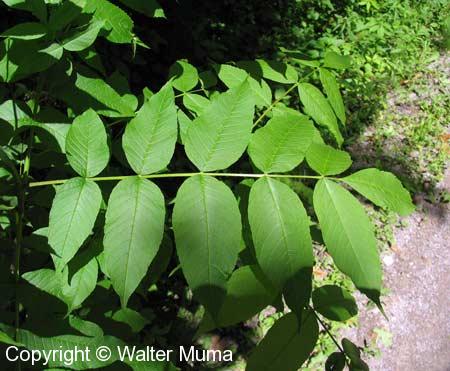
|
 |
A whole compound leaf. |
|
 |
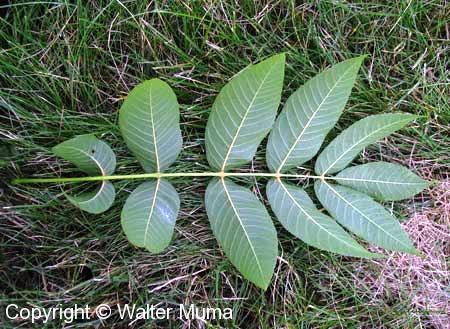
|
 |
Underside of another whole leaf. |
|
 |
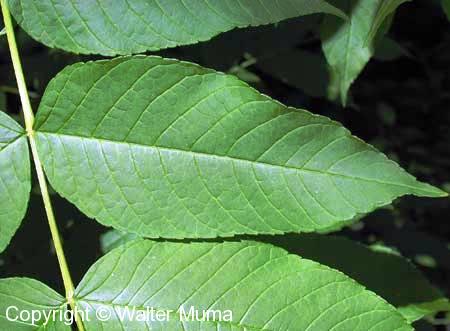
|
 |
Upper side of a leaflet. Note that there is no stalk on the leaflet. This is a distinctive feature of Black Ash. |
|
 |
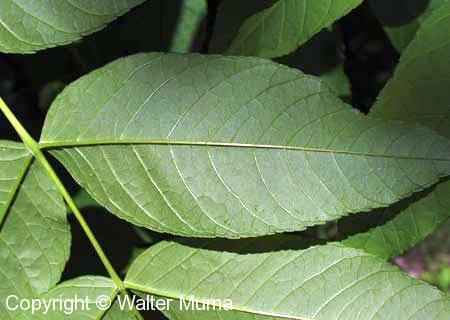
|
 |
Underside of the same leaflet. |
|
 |
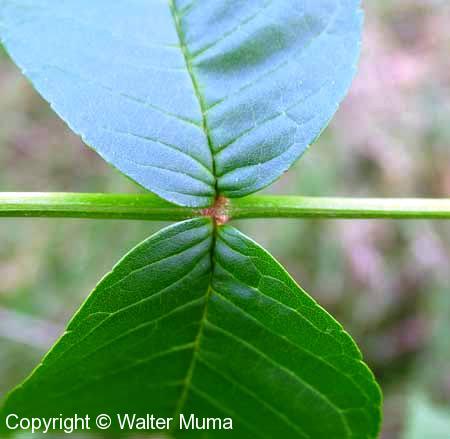
|
 |
This photo highlights the lack of leaflet stalk. |
|
 |
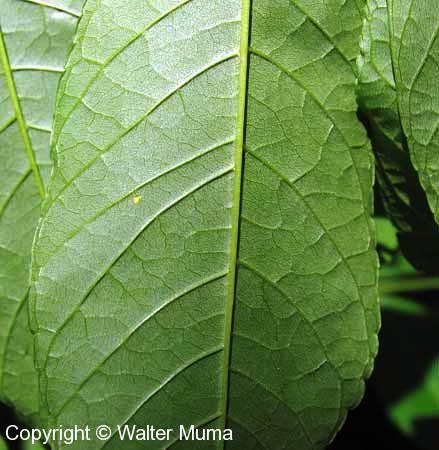
|
 |
Smooth underside. |
|
 |
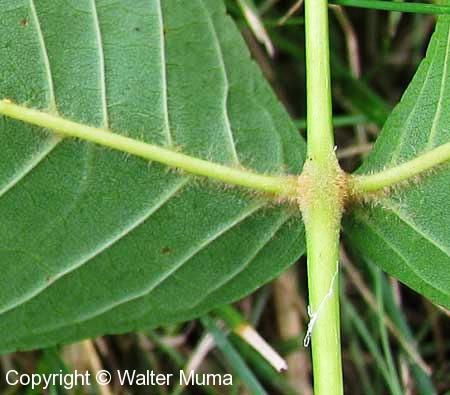
|
 |
Except for these tufts of hair where the leaflet joins the stem, readily visible in this closeup photo. |
|
 |
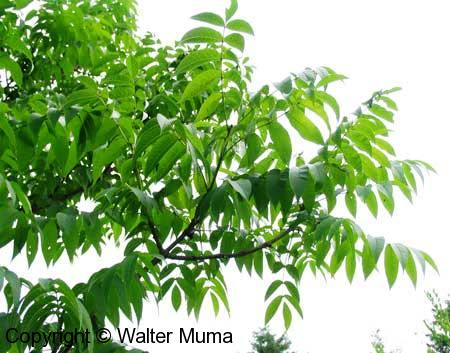
|
 |
Growth form of the leaves. |
|
 |
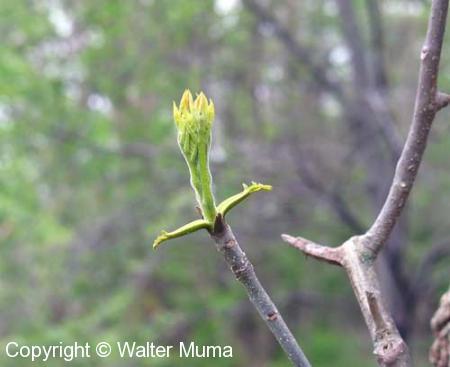
|
 |
Leaves opening in the spring. I don't like to anthropomorphise (attribute human ways to plants and animals), but this really looks like it's saying, after the long winter, "Ahhhhh!". |
|
 |
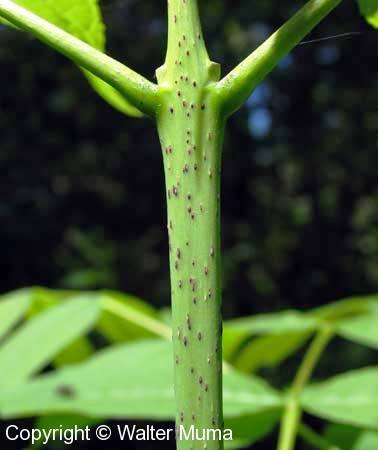
|
 |
Detail of a twig. Note the black dots scattered along its length. And also the sometimes flattened appearance. |
|
 |
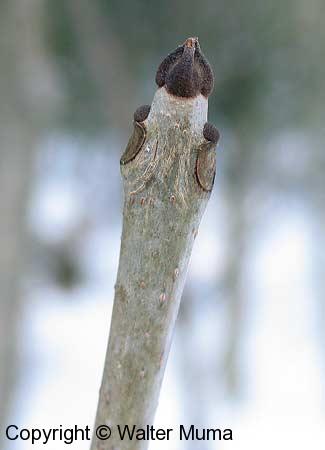
|
 |
How we come to the next distinctive feature of Black Ash: "Black is back". This refers to the two end side buds being located somewhat back from the end terminal bud, as shown in this photo. |
|
 |
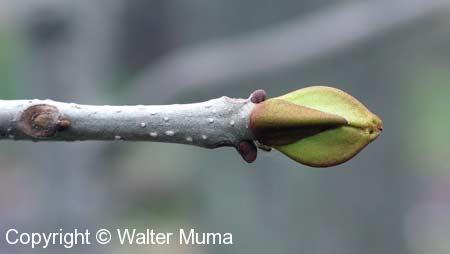
|
 |
Some more bud photos. |
|
 |
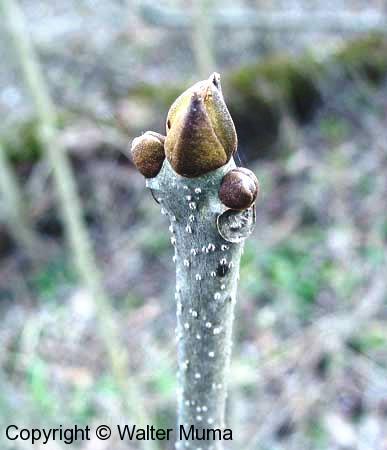
|
 |
Note also the ridged shaped of the terminal bud. |
|
 |
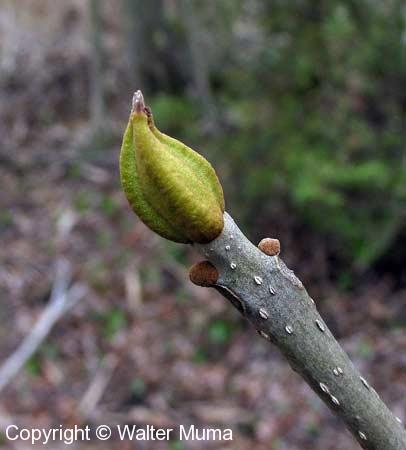
|
 |
Another terminal bud. |
|
 |
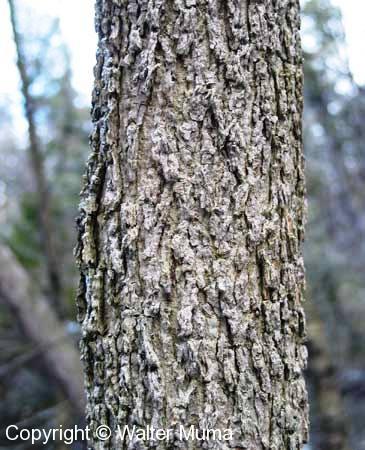
|
 |
Typical corky ridged bark on young-to-medium aged trees. |
|
 |
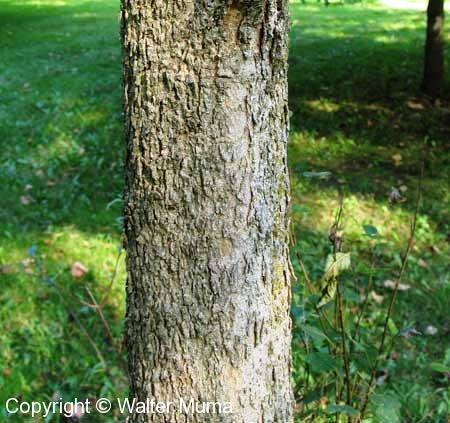
|
 |
A young tree. |
|
 |
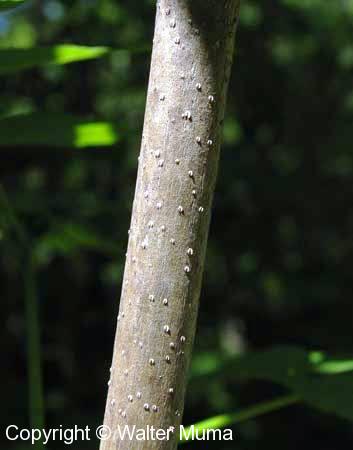
|
 |
A very young tree. It goes from this smooth bark, to the corky ridged bark, to the scaly bark of older trees (below). |
|
 |
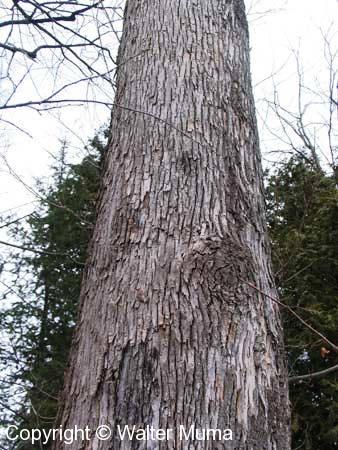
|
 |
When Black Ash trees get much older, their bark becomes scaly like this. Very different from the younger Black Ash trees, isn't it?! It's like that just to keep you on your toes, so you don't get arrogant thinking you know everything! :)
This tree had me fooled for about 15 minutes, along with my friend who was a native plant specialist, until we finally figured it out! Problem was, we were going by what the books say, that the bark is corky and ridged. We hadn't read in the few books where bark was described as being scaly. |
|
 |
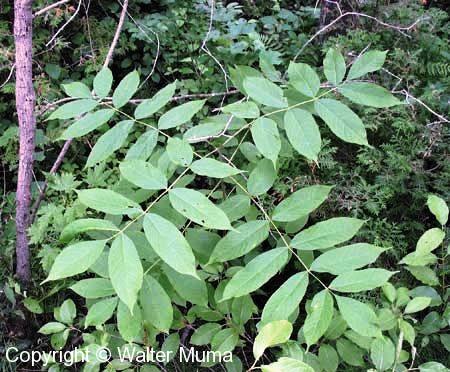
|
 |
A young tree. |
|
 |
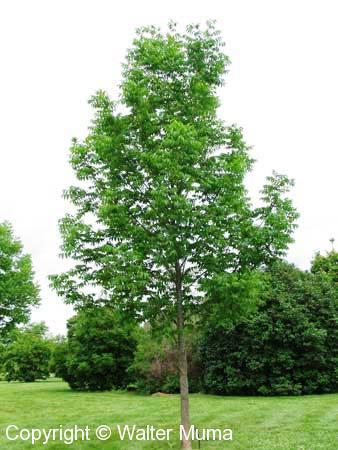
|
 |
An older tree, but still very young. Black Ash trees like to grow in wet areas such as swamps and marshes. But if planted, they will grow elsewhere. |
|
 |
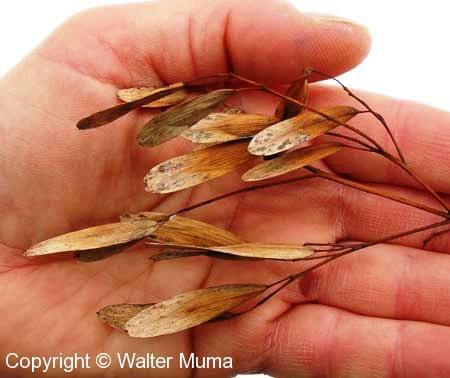
|
 |
Black Ash seeds in the winter. |
|
 |
|
|
 |
 |
|
|